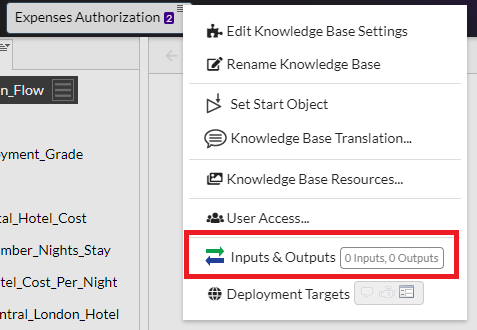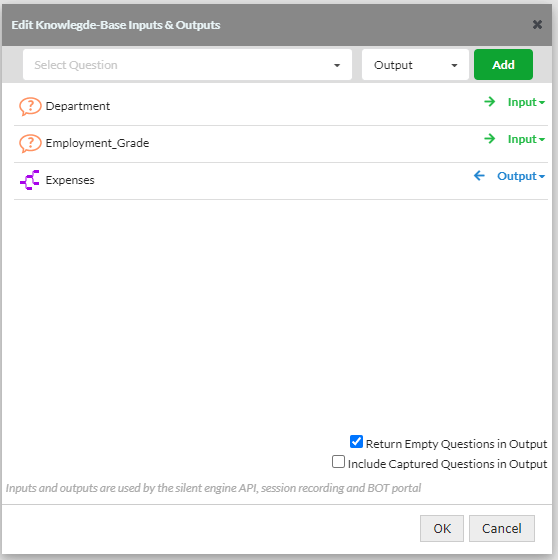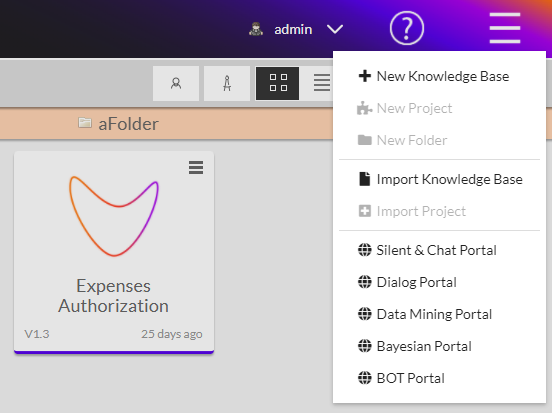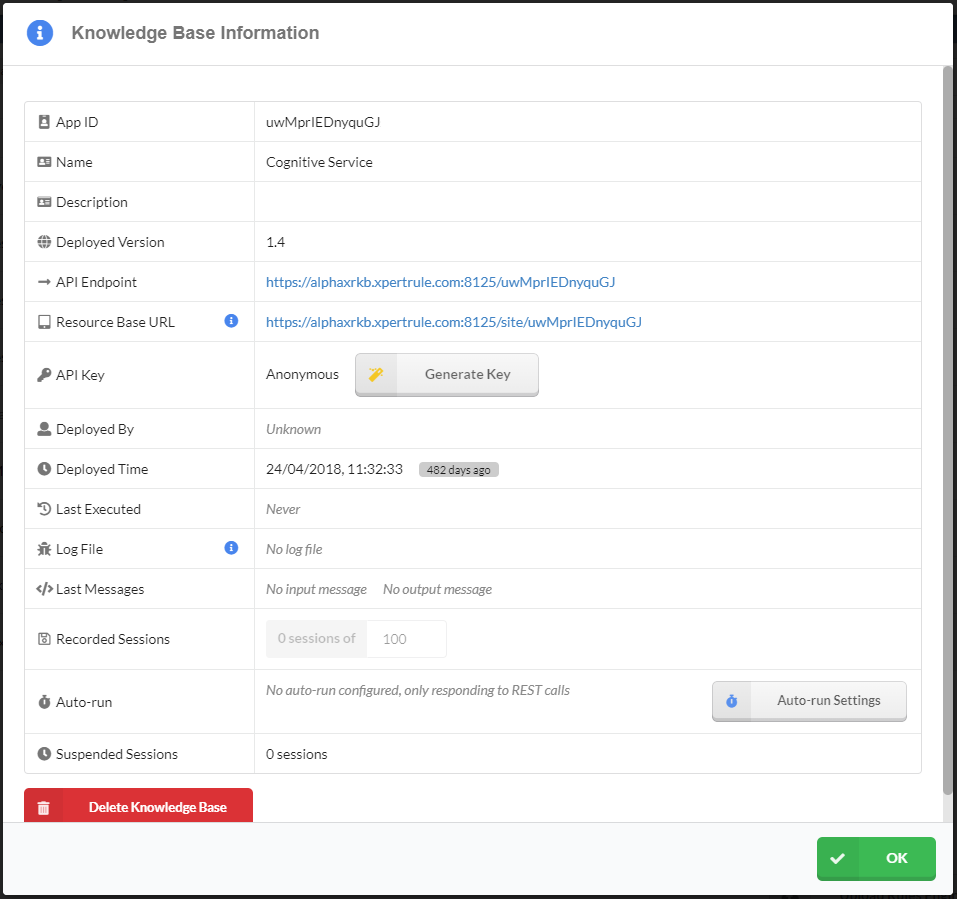HELP!
Silent Deployment
Silent Deployment Specifics
- No user interface
- Runs as a JSON web service
- Inputs and outputs easily defined
- This deployment can be utilised in one of two ways:
- Use Viabl Platform Silent Engine API as a REST Web Service
- Embed as a library in another Node.js application. This option is mainly used when deployed to specific targets such as small IoT Edge devices.
Silent knowledge base Settings
knowledge base Inputs & Outputs
Use the knowledge base Menu's Inputs & Outputs option to specify the inputs and outputs for your application...

Select knowledge base questions for supply and/or return in the API...

Additional knowledge base settings
- Optionally, under Custom JavaScript (Advanced) click Create to add your own (global) Server-side JS code
The Silent Server Management Portal
The Server Management Portal is where previously deployed applications can be managed.
Select the "Silent & Chat Portal" from the burger menu in the Home Screen:

Silent Server Functionality
The portal provides the following functionality:
- Show only your KB's by moving the slider
- Show App ID's by moving the slider
- Search by Application Name using search box
- Upload Kb Files directly
- Run the KB by pushing green play button
Knowledge Base Information
By clicking on a deployed knowledge base application, the following information is shown:
- App ID - unique Application ID
- Name - Name of Application
- Description - Optional description of Application
- Deployed Version - Automatically incremented when latest version deployed
- API Endpoint - URL to use the the Silent Engine
- Resource Base URL - Base URL for accessing content included in the knowledge base's resources, or written using xpertrule.writeFile()
- API Key - The application can run anonymously or an API Key can be generated which will need to be passed when calling the application.
- Deployed By - User that deployed the application
- Deployed Time - Time of last deployment
- Last Executed - When the application was last run
- Log File - Log file written to by optional debugging code in the application
- Last Input Messages - The last recorded session
- Recorded Sessions - Recorded Session Data for each execution of the application
- Auto-Run - Settings that allow the application to be run at a set interval with JSON being passed in each time
- Suspended Sessions - Number of suspended sessions waiting for Asynchronous return from an API call
- Delete Knowledge Base - Removes Knowledge base from deployment server
